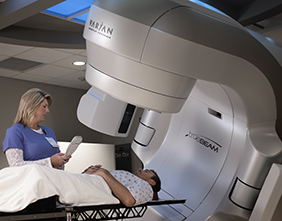Lima Memorial Health Focus: A Simple Test Could Save Your Life
posted on: 9/19/2017 9:04:34 AM
Health & Fitness Guest Columnist
Erika Gillette, Certified Physician Assistant
Lima Memorial Physicians
Indian Lake Family Care
Although it is the third most prevalent cancer in the US, lung cancer is currently the leading cause of cancer deaths among both men and women. In 2016 more than 200,000 new diagnoses of lung cancer were made, and more than 150,000 people died from this disease.
Currently, of all people diagnosed with lung cancer, the five-year survival rate is 18 percent. As with all cancers, the earlier it is identified, the higher the survival rate can be. Because symptoms often do not present until much later, approximately 75 percent of people currently diagnosed with lung cancer are diagnosed in late stages.

We also know that smoking is the leading cause of lung cancer with 85 to 90 percent of lung cancers being diagnosed in current or former smokers. The single, most effective decision a person can do to decrease his or her risk of getting lung cancer is to quit smoking. There are many resources to help, including visiting www.quitnow.net, a resource provided by the American Cancer Society.
While this information might sound grim, there is now new hope.
In 2013, a screening tool for lung cancer was recently approved by the Centers for Medicare & Medicaid Services as recommended by the American Cancer Society. This screening tool is known as a low-dose computer tomography scan, or low-dose CT scan. A national health study found the use of low-dose CT scans reduce mortality from lung cancer by about 20 percent when compared with the previous screening implement of a chest x-ray. This is a tool used for patients who have no symptoms and meet certain criteria. At this point, the scan is recommended for a person who is between 55 and 77 years of age, is a current smoker or quit smoking within the past 15 years, or has a 30-pack year history or more.
Pack years is calculated by multiplying the number of years a person has been smoking by how many packs a day smoked. For example, a person who has smoked 1 pack per day for 40 years would have a 40-pack year history, while a person who has smoked 2 packs per day for 20 years would also have a 40 pack year history. If you are unsure what your pack year history is, you can always talk with your primary care provider.
A low-dose CT is really a simple test that could save your life.
Patients are exposed to significantly less radiation than they would be with a normal CT. As with most medical procedures, it does come with risks and benefits. The benefits are clearly the early cancer detection and decreased cancer deaths. It is very important you discuss all of the risks and benefits associated with having a low-dose CT with your primary care provider to determine if it is the right test for you. Your provider will be able to answer your questions and order the test. If you currently do not have a primary care provider, I would encourage you to establish yourself and your family with a provider today. There are many of us throughout the Lima area and beyond who would love to get to know you and help you be as healthy as you should be.
Originally published in The Lima News Health and Fitness section.
Website





